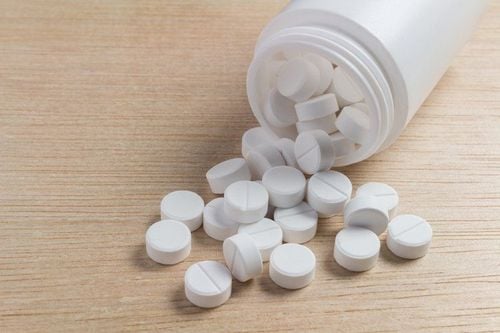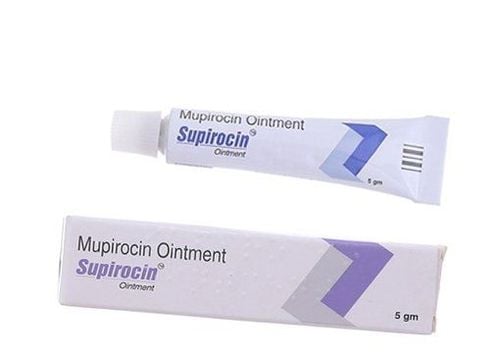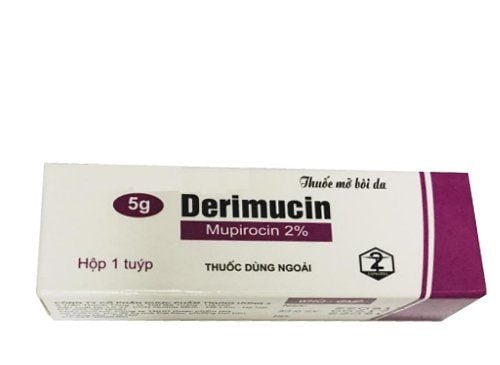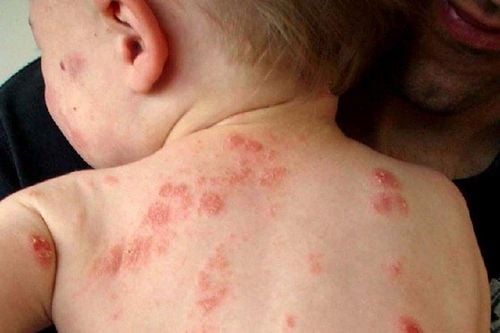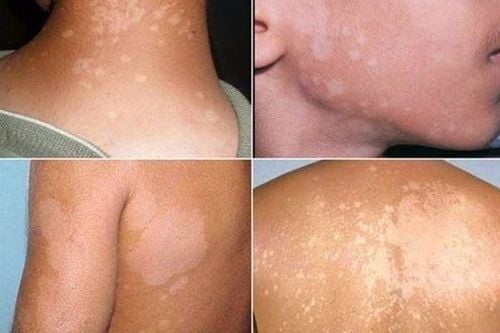This is an automatically translated article.
The article is expertly consulted by Master, Doctor Nguyen Minh Tuan - Pediatrician - Pediatrics - Neonatology - Vinmec Danang International General Hospital.Impetigo in children usually begins with small blisters on the skin and then slowly spreads to the whole body. This is a seemingly simple disease, but if it is not properly diagnosed and treated in time, it will be very easy to have complications affecting the health and development of children.
1. What is impetigo in children?
In the medical field, the term impetigo usually refers to superficial infections secondary to a certain skin condition or wound in the skin. Impetigo is one of the most common dermatological diseases in children, characterized by blisters, pustules and scaly patches on the skin.Impetigo, also known as contagious impetigo in children, is a condition in which the skin is infected by strep or staph bacteria and causes pustules and blisters on the skin. The bacteria that cause impetigo can penetrate the superficial or deep layers of the skin, depending on the patient's case.
Usually there are 3 types of impetigo as follows:
Impetigo without blisters: The most common form of impetigo in children, forming sores and small blisters, which can be caused by both streptococcus and staphylococcus. bridge. Bullous impetigo: This is a severe form of skin impetigo in children and can form large blisters like burns, with pus inside and can burst at any time. Impetigo: The most severe form of impetigo is caused by bacteria that penetrate the deep layers of the skin, which can be caused by streptococcus, staphylococcus, or both.
2. Causes of impetigo in children
The main cause of impetigo in children is streptococci or staphylococcus aureus, specifically:For impetigo without blisters, it may be due to group A beta-hemolytic streptococci, staphylococci or Streptococcus penetrates into small wounds on the skin of children and in them there are proteins that help bacteria attach to the tissues to form the disease. For bullous impetigo, it is usually due to the exfoliative staphylococcal toxin acting on the desmoglein 1 bridge of the epidermal squamous cells, causing them to peel off the superficial layer of the epidermis and form a squamous appearance. leaf scales. The form of impetigo is usually caused by streptococci or can be combined with Staphylococcus aureus to form the disease, usually occurring in immunocompromised patients, people with chronic diseases and the elderly. Impetigo in children occurs more often in boys than in girls, and sometimes occurs in adults with weakened immune systems. The disease often recurs in the summer in unsanitary living conditions and crowded residents.

3. Recognizing clinical signs of impetigo in children
Impetigo in children often occurs in places such as hands, feet, face or sometimes the whole body. The disease usually presents as solitary lesions on the skin. Patients often have the following clinical signs:The patient may have fever, fatigue, swollen lymph nodes; For impetigo without blisters, it usually begins as a pink macule on the child's skin, then progresses to vesicles and then within the blisters, the blisters will quickly turn pus and quickly break, creating scaly scratches. honey gold. There may or may not be mild itching at the lesion site, with or without a surrounding red halo; The form of impetigo also has the same initial signs as non-bullous impetigo, but then progresses to necrotic ulcers with indentations in the middle, which take a long time to heal and leave scars. Bullous impetigo usually has the first sign as small blisters that then grow into blisters. These blisters are usually fragile, shallow and have clear yellow fluid, will burst in 1 to 3 days, after bursting, leaving a thin skin border around, the patient will feel red, moist, and when healed, there is no scar.
4. Complications of skin impetigo in children
Impetigo in children is a seemingly simple disease, but if not treated properly and promptly, it will progress quickly and risk complications into:erysipelas; Cellulitis; Erythema multiforme; Staphylococcal scalded skin syndrome; Septicemia ; Medal; scarlet fever; Droplet psoriasis.
5. Instructions on how to take care of children with impetigo at home

Cover the impetigo area to help prevent fluids from spreading. from the blisters can not spread the bacteria to the parts of the body and people in contact with the child; Dress the child in comfortable and cool clothes; Cut your child's nails regularly to ensure that bacteria do not accumulate under the nail when the child scratches, and at the same time limit skin damage and cause blisters to burst; For young children, do not wear diapers; Regularly wash your child's hands with a safe disinfectant to prevent the accumulation of strep and staph bacteria; Clean sores once daily with warm water; Wash children's clothes separately and leave them at home.
6. Methods to prevent impetigo in children

Let children play in a cool, clean place; In the summer, children should wear cool, sweat-absorbent clothes; Keep the house and children's play area clean, avoid dust, avoid playing near sharp objects and pets, avoid insects; Make sure children drink enough water and eat lots of fruits and vegetables; Limit going to dimly lit places prone to insect stings; Once the disease is detected, it must be treated immediately to prevent its spread and complications. As a key area of Vinmec Medical system, Pediatrics Department always brings satisfaction to customers and is highly appreciated by industry experts with:
Gathering a team of leading pediatricians: including leading experts with high professional qualifications (professors, associate professors, doctorates, masters), experienced, worked at major hospitals such as Bach Mai, 108.. Doctors All are well-trained, professional, with a mind - range, understanding young psychology. In addition to domestic pediatric specialists, the Department of Pediatrics also has the participation of foreign experts (Japan, Singapore, Australia, USA) who are always pioneers in applying the latest and most effective treatment regimens. . Comprehensive services: In the field of Pediatrics, Vinmec provides a series of continuous medical examination and treatment services from Newborn to Pediatric and Vaccine,... according to international standards to help parents take care of their baby's health from birth to childhood. from birth to adulthood Specialized techniques: Vinmec has successfully deployed many specialized techniques to make the treatment of difficult diseases in Pediatrics more effective: neurosurgery - skull surgery, stem cell transplantation. blood in cancer treatment. Professional care: In addition to understanding children's psychology, Vinmec also pays special attention to the children's play space, helping them to have fun and get used to the hospital's environment, cooperate in treatment, improve the efficiency of medical treatment. Master. Doctor. Nguyen Minh Tuan has over 27 years of experience in the field of Pediatrics. The doctor was former Deputy General Department of Pediatrics - Da Nang Obstetrics and Gynecology Hospital before being a Pediatrician at the Department of Pediatrics - Neonatology - Vinmec Danang International General Hospital as it is now
Please dial HOTLINE for more information or register for an appointment HERE. Download MyVinmec app to make appointments faster and to manage your bookings easily.





